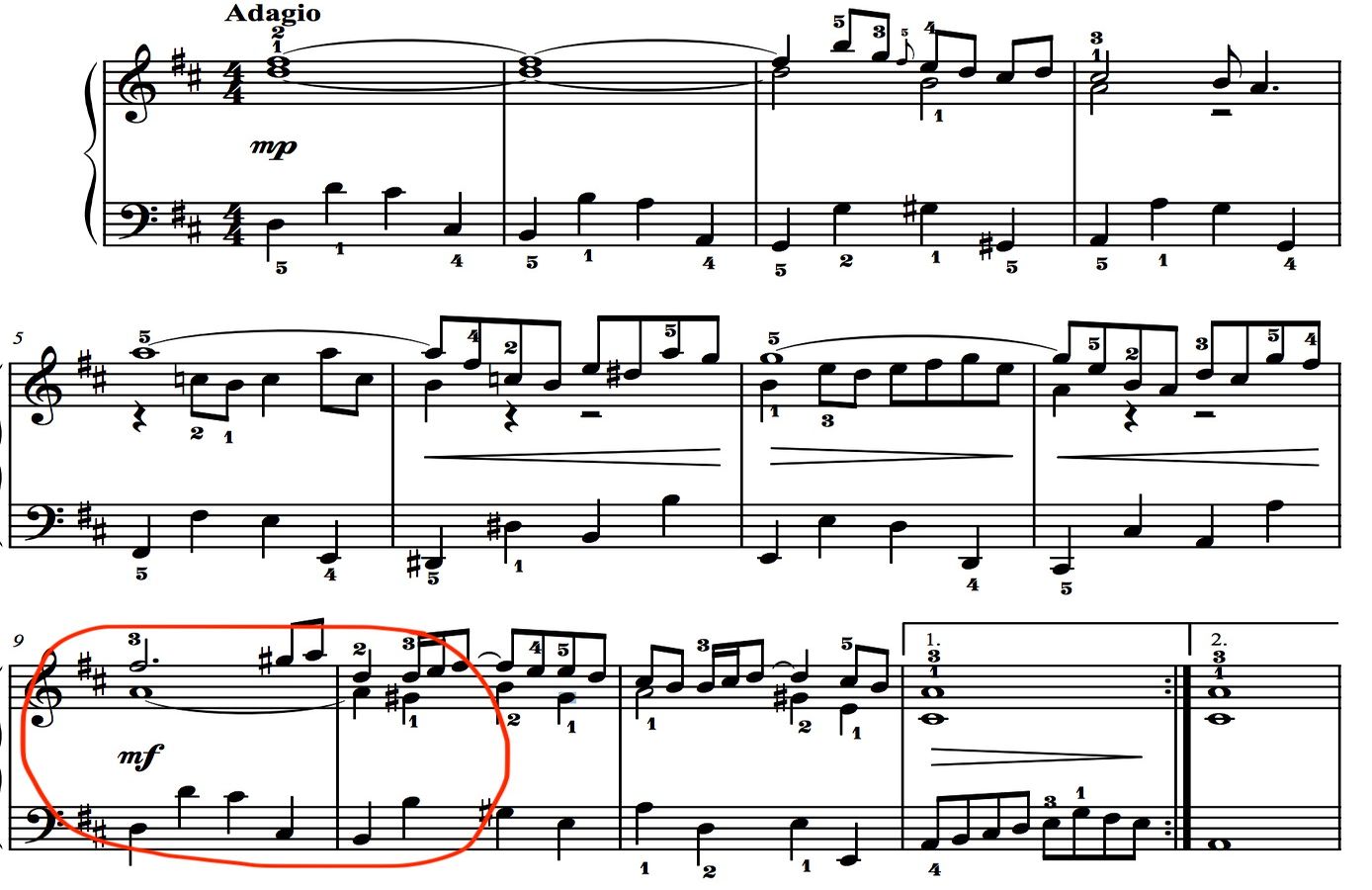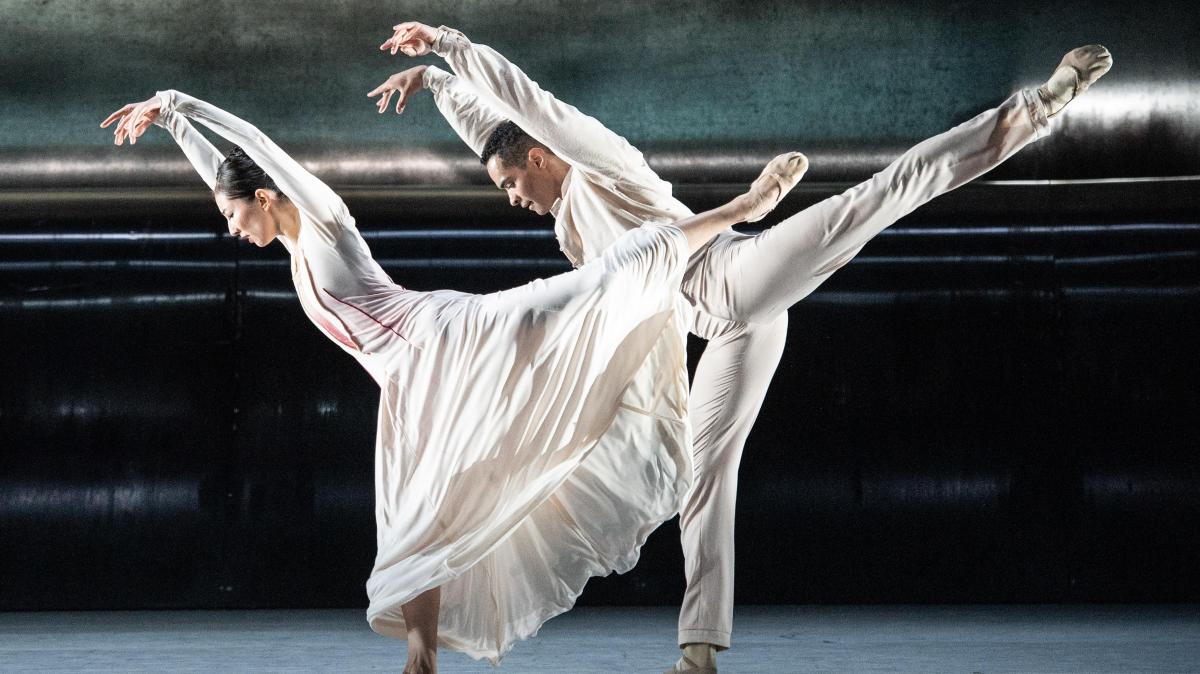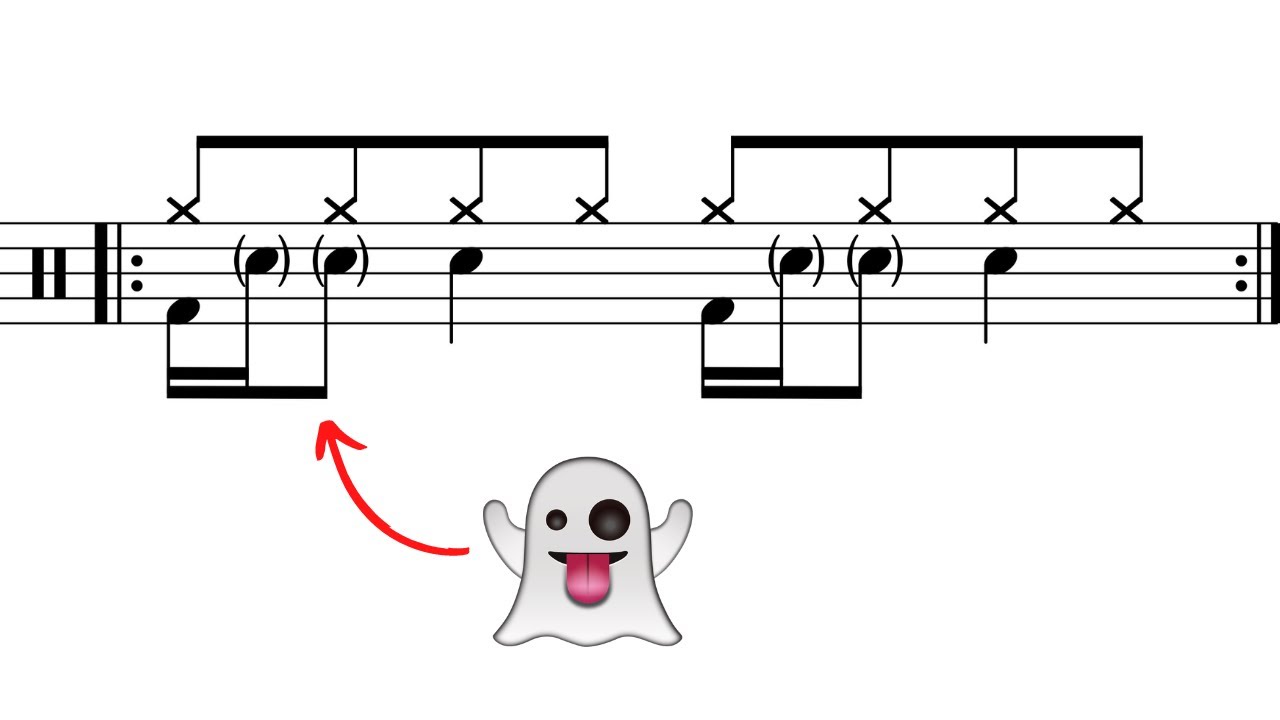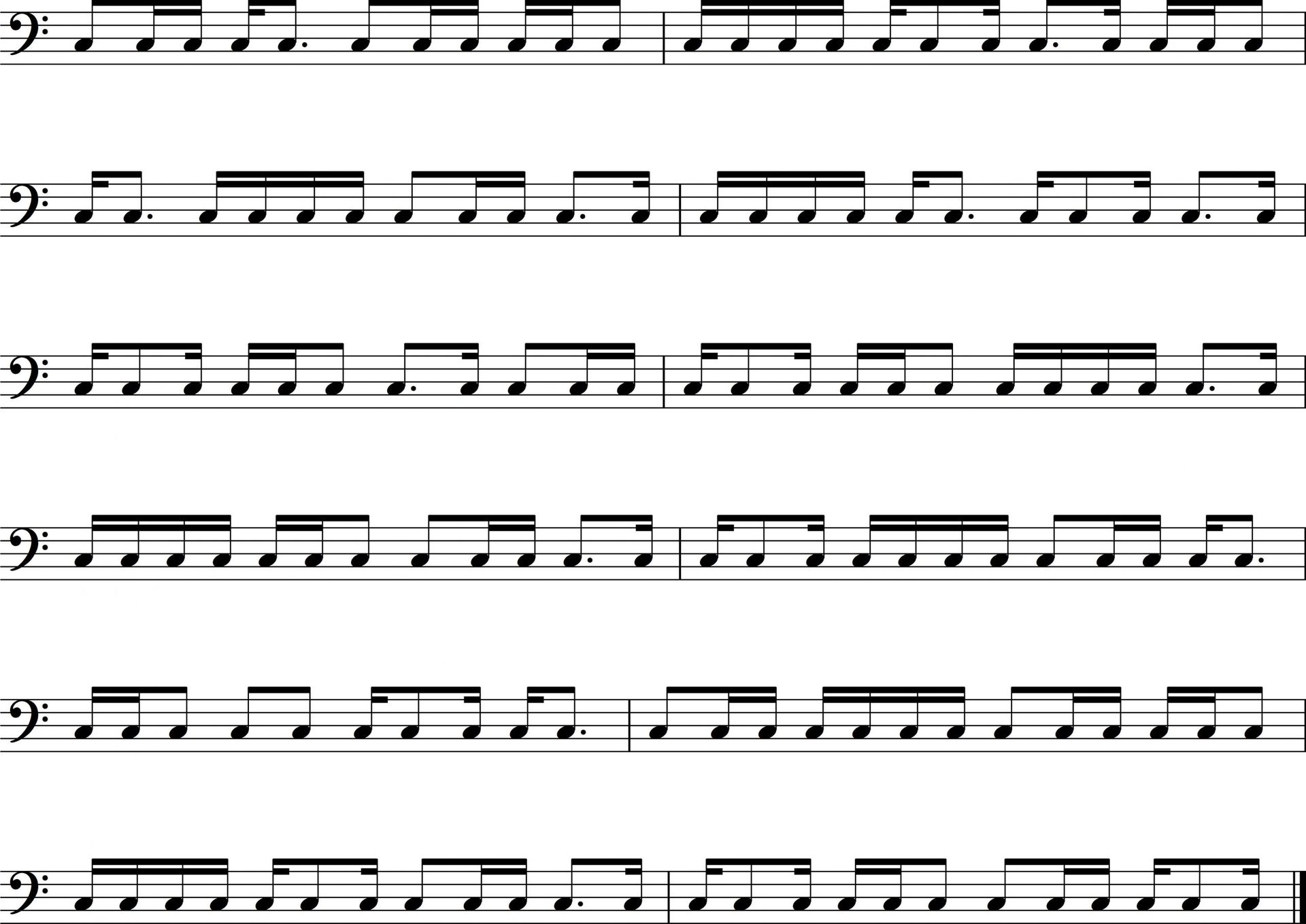Home>Events & Info>Note>What Is A Music Note Called Rest
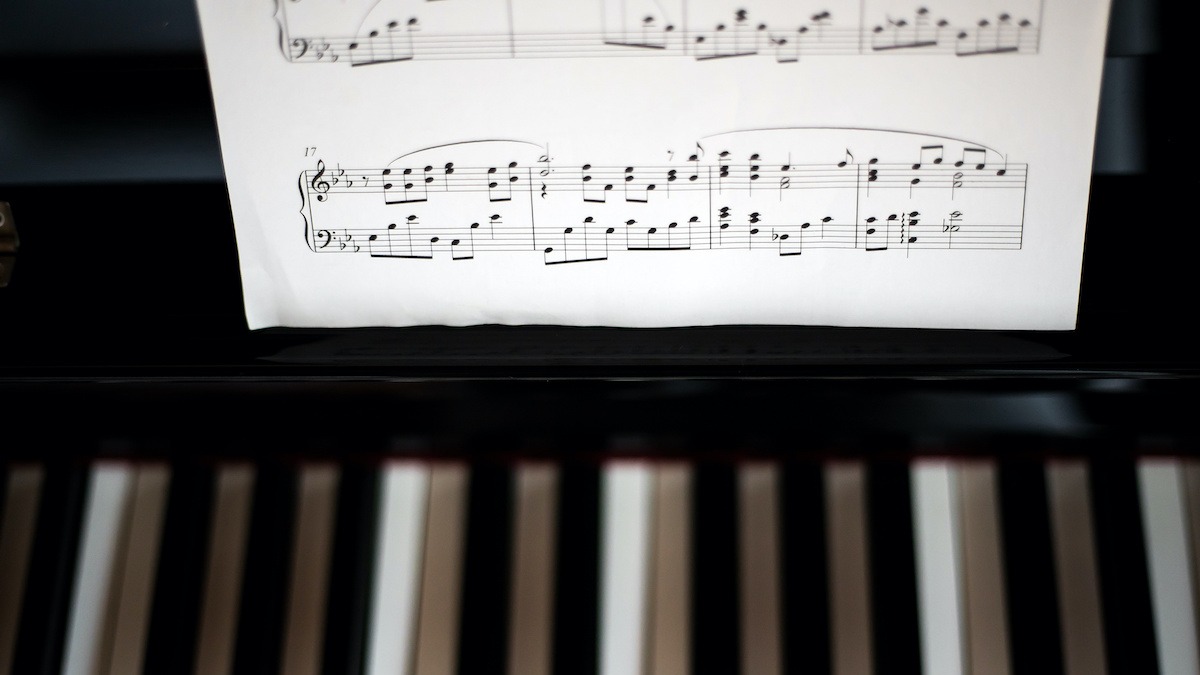

Note
What Is A Music Note Called Rest
Modified: January 22, 2024
Learn all about music notes, including rests. Find out what a music note called "rest" is and how it affects the rhythm and timing in musical compositions.
(Many of the links in this article redirect to a specific reviewed product. Your purchase of these products through affiliate links helps to generate commission for AudioLover.com, at no extra cost. Learn more)
Table of Contents
Introduction
Music is a universal language that moves and touches our souls. It has the power to evoke emotions, bring back memories, and create a lasting impact. While many people are familiar with musical notes and melodies, not everyone is aware of the importance of rests in music. In this article, we will explore what a music note called rest is and its significance in creating beautiful compositions.
Music notes are the building blocks of a melody, representing specific pitches and durations. They are the sounds that we hear when a piece of music is played or sung. However, in between these notes, there are moments of silence that hold equal importance in the composition. These moments are known as rests.
Rests in music act as a pause or a break, allowing the music to breathe and adding a sense of rhythm and musicality to the overall composition. They provide a structured and well-balanced flow to the piece, giving it depth and dynamics. Without rests, music would feel continuous and lack the necessary space for artistic expression.
Rests are not just simple silences in music; they have distinct durations, just like musical notes. Different types of rests exist, each with its own length and significance. Understanding these variations is crucial for musicians and composers to accurately convey their musical intentions.
In the following sections, we will explore the definitions, types, lengths, and notation of rests, as well as their significance in creating compelling musical compositions.
Definition of a Music Note
A music note is a symbol used in musical notation to represent a specific pitch and duration. It is a visual representation of a sound that is produced when played or sung. Each note on the musical staff has a unique shape and position, indicating its pitch and length.
Music notes are written on a set of horizontal lines and spaces called a staff. The staff consists of five lines and four spaces, with each line and space representing a different pitch. The positioning of the notes on the staff determines their pitch, with higher notes placed higher on the staff and lower notes placed lower.
Notes can be categorized into different types based on their duration. The most common types of music notes include whole notes, half notes, quarter notes, eighth notes, and sixteenth notes. Each type of note has a specific time value or duration, indicating how long it should be held or played.
For example, a whole note is a round-shaped note that represents the longest duration. It is held or played for a length of four beats in most time signatures. On the other hand, a quarter note is a solid-colored note with a stem attached to it, which represents a duration of one beat.
Music notes are not only limited to specific shapes; they can also have additional elements such as flags, beams, dots, and ties, which influence their duration and rhythmic value. These elements help musicians understand how to interpret and perform the music accurately.
Definition of a Rest
In music, a rest is a symbol used to indicate a period of silence or pause in a composition. It is a musical notation that represents the absence of sound, providing a moment of rest in between musical notes. Rests serve as essential components in creating rhythm and adding structure to the music.
Rests are designated by specific symbols that vary in appearance based on their duration. They are written on the same musical staff as notes, using vertical positioning to indicate the duration of silence. The placement of rests on the staff follows the same principles as notes, with rests occupying the appropriate lines or spaces to represent their length.
Similar to notes, rests are categorized into different types based on their durations. The most common types of rests include whole rests, half rests, quarter rests, eighth rests, and sixteenth rests. Each type of rest has a specific time value or duration, indicating how long the silence should last.
For example, a whole rest is represented by a rectangular-shaped symbol that covers an entire measure and signifies a duration of four beats. A quarter rest, on the other hand, is a squiggly line that hangs below the middle line of the staff, indicating a pause of one beat.
Rests are crucial in music because they provide rhythmic structure, give musicians a chance to pause and prepare for the next musical phrase, and contribute to the overall pacing and flow of the composition. They allow for moments of tension and release and add a sense of dynamics and expression to the music.
Just like musical notes, rests can also be modified with additional elements such as dots or ties, which affect their duration and rhythmic value. Understanding and properly interpreting rests is essential for musicians and performers to accurately convey the desired musical ideas and intentions of the composer.
Different Types of Rests
Rests in music come in various types, each denoting a specific duration of silence. These different types of rests allow musicians to create rhythmic patterns and pauses with precision. Here are some of the common types of rests:
- Whole Rest: Represented by a solid rectangle hanging from the fourth line of the staff, the whole rest indicates a silence lasting for an entire measure. It is equivalent to four beats in most time signatures.
- Half Rest: A half rest is denoted by a thick horizontal line placed above the third line of the staff. It represents a pause lasting for two beats.
- Quarter Rest: Indicated by a squiggly line curving downwards from the middle line of the staff, the quarter rest designates a silence lasting for one beat.
- Eighth Rest: Shaped like an “S” with a single flag, the eighth rest symbolizes half a beat of silence. It is written diagonally across the middle line of the staff.
- Sixteenth Rest: Represented by two diagonal lines with two flags, the sixteenth rest denotes a silence lasting for a quarter of a beat. It appears crossed diagonally across the middle line of the staff.
In addition to these basic types, longer durations of rests can be achieved by combining rests with dots or ties. A dot placed after a rest increases its duration by one-half, while a tie connects two rests of the same type, combining their durations.
By utilizing these various types of rests, composers and musicians can create rhythmic patterns with precision and intricacy. The placement and duration of rests are crucial in determining the overall flow and structure of a musical composition.
It’s important for musicians to understand and interpret rests accurately, as they contribute significantly to the dynamics and interpretation of the music. By treating rests as meaningful pauses rather than mere gaps, musicians can bring out the intended musical expression and enhance the overall quality of the performance.
Length and Duration of Rests
The length and duration of rests in music are essential elements that contribute to the overall rhythm and timing of a composition. Rests are notated in musical scores to indicate the duration of silence or pause between musical notes. Understanding the length and duration of rests is crucial for musicians and performers to accurately interpret and render the desired musical expression.
The length of a rest refers to the number of beats or counts it lasts in a measure. Different types of rests have specific durations, which are represented by their unique symbols on the musical staff. Let’s explore the length and duration of some common rests:
- Whole Rest: A whole rest lasts for the entire measure and is equivalent to four beats in most time signatures.
- Half Rest: A half rest covers two beats of silence.
- Quarter Rest: A quarter rest denotes one beat of silence.
- Eighth Rest: An eighth rest represents half a beat of silence.
- Sixteenth Rest: A sixteenth rest signifies a quarter of a beat of silence.
Rests with longer durations can be achieved by combining multiple rests or adding dots and ties. A dot placed after a rest increases its duration by one-half, while a tie connects two rests of the same type to combine their durations.
It is important to note that the length and duration of rests can vary depending on the time signature and tempo of the music. In complex time signatures or faster tempos, rests may be shortened or lengthened to maintain the desired rhythmic structure.
Understanding the length and duration of rests is crucial for performers to maintain a steady and accurate rhythm. It allows musicians to anticipate their next entry and ensures a seamless transition between musical phrases. Additionally, observing the correct length of rests contributes to the overall dynamics and musicality of the performance.
By paying attention to the length and duration of rests, musicians can emphasize the importance of silence in music and effectively convey the composer’s intended rhythm and expression.
Notation of Rests
In musical notation, rests are represented by specific symbols placed on the staff to indicate periods of silence in a composition. The notation of rests is integral for musicians and composers to accurately interpret and perform the music as intended. Let’s explore how rests are notated:
The symbols used to represent rests vary based on their duration. Here are the standard symbols for some common rests:
- Whole Rest: A whole rest is denoted by a solid rectangular shape hanging from the fourth line of the staff.
- Half Rest: The symbol for a half rest is a thick horizontal line placed above the third line of the staff.
- Quarter Rest: A quarter rest is represented by a squiggly line curving downwards from the middle line of the staff.
- Eighth Rest: The eighth rest appears as a small “S” shape with a single flag placed diagonally across the middle line of the staff.
- Sixteenth Rest: A sixteenth rest is symbolized by two diagonal lines with two flags, crossing diagonally across the middle line of the staff.
Notation for rests also involves vertical placement on the staff. Rest symbols are placed on the appropriate line or space to indicate their duration, following the same principles as note placement. Higher-pitched rests are placed higher on the staff, while lower-pitched rests are positioned lower.
In addition to the basic symbols, rests can also be modified by adding dots or ties. A dot placed after a rest increases its duration by one-half. A tie connecting two rests of the same type combines their durations, creating a longer rest value.
Rests are not only visually represented on the staff, but they are also indicated through specific rest durations in the time signature. The time signature provides information on the number of beats per measure, further guiding the notation and placement of rests.
Understanding the notation of rests is essential for musicians to accurately interpret and perform the music. Properly notating rests ensures that the rhythmic structure and timing of the composition are conveyed effectively, allowing for clear and precise musical expression.
Importance of Rests in Music
Rests play a crucial role in music, bringing balance, rhythm, and expression to compositions. While notes are the audible sounds we hear, rests provide the necessary pauses and silences that create a dynamic and captivating musical experience. Here are several reasons why rests are important in music:
Rhythm and Timing: Rests are key components in establishing the rhythm and timing of a musical piece. They create breaks and pauses between notes, allowing for a structured and cohesive flow. Rests are like punctuation marks in a musical sentence, separating musical phrases with precision and clarity.
Artistic Expression: Rests are integral for expressing musical ideas and emotions. They give the performer the opportunity to accentuate certain notes or phrases, creating contrast and emphasizing specific musical elements. Rests can evoke anticipation, tension, or a sense of release, enhancing the overall emotional impact of the music.
Dynamic Contrast: Rests contribute to the dynamics of a musical composition. By providing moments of silence, they create contrast against the sound produced by notes. Well-placed rests can make the music more compelling, allowing for a range of dynamics from soft and subtle to loud and impactful.
Structural Integrity: Rests help in organizing a piece of music. They provide natural breaks that aid in segmenting sections and phrases, making it easier for performers and listeners to follow the musical structure. Rests establish a sense of coherence and clarity, ensuring that each element of the composition falls into place harmoniously.
Musical Breathing: Rests give musicians the opportunity to breathe and regroup. In vocal performances, rests provide crucial moments to take a breath and sustain a healthy and controlled sound throughout a piece. For instrumentalists, rests allow them to rest their fingers or reposition their stance, reducing fatigue and maintaining technical precision.
Accentuating Note Value: Rests can reveal the importance of the notes surrounding them. By surrounding a note with rests, its value and significance are highlighted. Rests have the power to create contrast and draw attention to specific melodic or rhythmic elements, thereby enhancing the overall musical expression.
Artistic Interpretation: Interpreting rests is an essential aspect of musical performance. Musicians must have an understanding of the musical context and composer’s intent to determine how long rests should last and how they should be approached. This creative interpretation allows for individual expression and personalization of the music.
Rests are not simply absences of sound; they are an integral part of the music itself. They bring rhythm, structure, and depth to compositions, enabling performers to convey the intended musical message and engage listeners on a profound level.
Conclusion
Rests may seem like moments of silence in music, but they hold immense significance in the creation and interpretation of musical compositions. They provide the necessary pauses, rhythm, and structure that allow musical notes to come alive and be appreciated fully. Understanding the role of rests is essential for musicians, composers, and even listeners, as it enhances their overall musical experience.
From the different types of rests with varying durations to their notation on the staff, rests bring balance and dynamics to a piece of music. They allow for artistic expression, dynamic contrast, and the precise timing needed for musicians to communicate their musical intentions effectively. Rests not only create rhythmic patterns but also contribute to the emotional depth and expression of a composition.
In addition, rests help create structure and maintain the flow of a musical piece. They serve as guideposts, dividing music into sections and phrases, helping performers and listeners navigate through the composition with clarity and understanding. Rests give music room to breathe and offer performers an opportunity to showcase their interpretation and musicality.
When understood and utilized properly, rests can be powerful tools for a musician’s artistic expression. By paying attention to the length, duration, and placement of rests, musicians can evoke emotions, highlight melodic elements, and captivate audiences with their performances.
In conclusion, rests are not mere pauses or gaps in music. They are integral and intentional elements that enhance the rhythm, structure, and overall artistic impact of a composition. Whether you are a music lover, performer, or composer, taking note of the rests in music allows for a deeper appreciation and understanding of the depth and intricacy of this beautiful art form.




